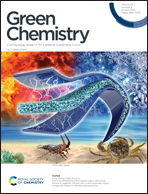Reprogramming the sulfur recycling network to improve l-cysteine production in Corynebacterium glutamicum†
Abstract
Synthetic biology aims to reprogram the cellular metabolic network to efficiently produce valuable chemicals. L-Cysteine, a valuable sulfur-containing amino acid, has been widely used in various fields such as agriculture, feed additives, pharmaceuticals, and cosmetics. In recent years, many attempts have been made to engineer microorganisms to produce L-cysteine through several metabolic strategies, but most L-cysteine-producing strains have a very low sulfur conversion rate (SCR), resulting in resource wastage and environmental pollution. In this study, we created an H2S2-responsive genetic circuit to reconstruct the L-cysteine biosynthesis network of Corynebacterium glutamicum to improve the SCR and L-cysteine production. First, an L-cysteine-producing chassis was constructed by deleting the degradation pathway and strengthening the L-cysteine synthetic pathway and transportation system. The resulting strain produced 0.96 g L−1L-cysteine, but the SCR was only 4.15%. To improve the SCR, a bifunctional H2S2-responsive genetic circuit (BSGC) was developed to dynamically activate and repress the expression of target genes based on the concentration of H2S2. Subsequently, the L-cysteine biosynthetic pathway was reconstructed using BSGC to realize H2S sequestration and reuse. As a result, the BSGC strain Cys-9-4 accumulated 1.85 g L−1 of L-cysteine with a yield of 45.40% of SCR, which increased 33.09% and 7.58-fold compared with those of the static regulation strain Cys-9-5 (1.39 g L−1 of L-cysteine and 5.99% of SCR), respectively. To further improve L-cysteine production, the NADPH pool was enhanced by overexpressing glucose-6-phosphate dehydrogenase (Zwf). Finally, the recombinant strain Cys-10 accumulated 2.11 g L−1L-cysteine in a shake flask and 5.92 g L−1 in a 5 L fermenter with 51.78% and 74.97% SCR, respectively, which were the highest levels of L-cysteine production and SCR ever reported in C. glutamicum. Therefore, our results provided an effective strategy to dynamically regulate the sulfur-utilizing metabolic network for high-level production of L-cysteine and other sulfur-containing compounds.



 Please wait while we load your content...
Please wait while we load your content...